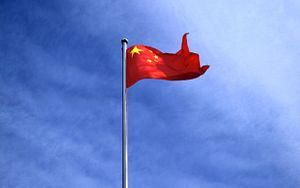On June 23, China held a virtual conference on the Belt and Road Initiative (BRI), formally titled the “Asia and Pacific High-level Conference on Belt and Road Cooperation.” The meeting was hosted by Foreign Minister Wang Yi, with President Xi sending a written address.
According to the Chinese Foreign Ministry, the conference was attended by “more than 30 parties, including foreign ministers or economic ministers of relevant countries in Asia-Pacific and representatives of the United Nations and other international organizations.” The countries in attendance, according to a Foreign Ministry press release (in Chinese), were Afghanistan, Bangladesh, Brunei, Cambodia, Chile, China, Colombia, Fiji, Indonesia, Kazakhstan, Kyrgyzstan, Laos, Malaysia, Maldives, Mongolia, Myanmar, Nepal, Pakistan, Philippines, Saudi Arabia, Singapore, Solomon Islands, Sri Lanka, Tajikistan, Thailand, Turkmenistan, the United Arab Emirates, Uzbekistan, and Vietnam.
Myanmar was an especially interesting inclusion, continuing China’s trend of recognizing the junta that took control in a February 1 coup as a legitimate diplomatic actor.
The topic of the meeting, suitably enough, was “Promoting Cooperation on Combating the Pandemic for Sustainable Recovery.” In that vein, the main themes were emphasizing the equitable distribution of COVID-19 vaccines and ensuring climate-friendly growth in the post-pandemic era. Among the points raised in the “six-point consensus” Wang announced at the end of the meeting was an agreement “to further step up international cooperation on vaccines, and promote the fair international distribution of vaccines, as a global public good, in countries around the world.” Another point of consensus was the belief “that the post-COVID recovery of the world economy should be green and sustainable,” and an agreement that the BRI will reflect this by “put[ting] green development in a more prominent position.”
At the meeting, two new BRI-themed initiatives were launched, focusing on each of these areas. First is the new “Belt and Road Partnership on COVID-19 Vaccines Cooperation,” which will seek to “strengthen international cooperation in vaccine research and development, production and distribution, and improve the accessibility and affordability of vaccines globally, especially in developing countries.”
A more detailed read-out, available only in Chinese as of this writing, called specifically for the BRI to focus on strengthening communication over vaccine regulation processes to ensure coordinated safety and efficacy standards. It also called for more joint research and development of vaccines and vaccine technologies, as well as encouraging technology transfers to and joint vaccine production partnerships in developing countries.
The initiative also calls on vaccine-producing countries (which would include China, but also India, Russia, the U.K., and the U.S., among others) to provide more vaccines to the World Health Organization’s COVAX initiative, and to donate or export more vaccines directly to the developing world.
Most of those countries, however, are outside the BRI so were not directly involved in the meeting – and Russia, which has joined the BRI, was not listed as among the attendees. (Interestingly, a screenshot image of the event posted on the ESCAP website showed a representative flanked by a British flag, but the U.K. has not formally joined the BRI and was not officially listed among the participants.)
Meanwhile, the G-7 countries, plus invited guests Australia, India, South Africa, and South Korea, recently pledged to boost vaccine production a distribution at their separate summit, held on June 11 in the U.K.
The other major outcome from the meeting was a new “Initiative for Belt and Road Partnership on Green Development,” which aims to boost cooperation among BRI countries “in such areas as green infrastructure, green energy and green finance, and promote green, low-carbon and sustainable development.” According to China’s Foreign Ministry, this agreement endorsed the existing U.N. 2030 Sustainable Development Goals as well as the Paris Agreement on climate change.
Within the framework of the BRI, the agreement includes a pledge to strengthen environmental risk assessments for related projects, based on “internationally recognized standards and best practices.” That will be music to the ears of climate activists, who have long slammed Chinese investments abroad – including, but not limited to, those linked to the BRI – for neglecting the environmental impacts of their projects.
The agreement also promises to promote clean and renewable energy as part of the BRI and develop new “green financing tools” to fund climate-friendly projects. China has already implemented a Green Silk Road Fund since 2015 to provide privately-sourced funding for such projects in BRI countries, and officially the state-run Silk Road Fund is supposed to prioritize green projects as well.
The 29-country meeting held on June 23 makes an interesting comparison to China’s two previous Belt and Road Forums, held in 2017 and 2019. Those forums were attended by 29 and 37 heads of state or government, respectively. Giving the timing of the two forums, we might have expected a third to be held in 2021, absent the intervention of the COVID-19 pandemic. Instead, it appears Beijing is settling for a slimmed-down version: virtual, instead of in-person, and at the ministerial rather than head of state or government level (the only top foreign leader mentioned to be in attendance by China’s Foreign Ministry was Colombian President Ivan Duque). The conference was also billed as regionally bound instead of global in scope (although the attendee list goes somewhat beyond the “Asia-Pacific” theme highlighted in the official title, reaching the Middle East and extending to the western coast of South America).
Whether that’s a sign of China’s diminished ambitions for the BRI, diminished interest from other parties amid growing China-U.S. tensions, or simply a recognition of pandemic-era realities is in the eye of the beholder.

































